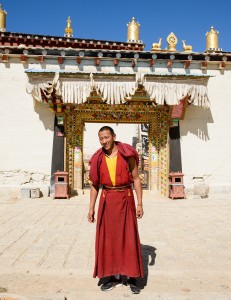You’d be hard-pressed to find many people who don’t love to travel – especially amongst camera wielders. We love exploring new places around the globe and bringing back photos to share with all our friends. It’s exciting, and a look at the world outside our own perspective.
There are three questions I always find myself being asked when returning from a travel assignment – where did you go, what did you eat and who did you meet? A key component in any good travel photo story is capturing portraits and the daily interactions of the people wherever you go. The astounding diversity across the world is what makes us so fascinating to each other. For this article, we’ll focus specifically on interaction based portraiture instead of candid captures.
Here are a few tips and tricks I use for capturing the quintessential travel portrait.
Perhaps my favorite phrase and one I pass along to anyone looking to create better people-based photography is this, “Check your shame at the door.” What that simply means is never be afraid to ask, dance or make a complete fool of yourself in pursuit of a great photo.
There’s no room for ego in this business and you need to get over any worries you may have about asking people for photographs. The photographer who asks for a portrait will capture 100% more than the one who doesn’t. After all, all they can say is no. If you have plans on making a career in the photo industry you’ll need to get over your discomfort of the word “no.” Because you hear it – a lot. Take the negativity out of it and think of “no” as merely a stepping stone to another “yes.”
When you get that critical yes – or sometimes the hand gesture or smile that says to conveys an ok – it’s time to jump into action.
Travel portraiture relies heavily on context. You don’t want someone to look at an image and think you captured it right outside your house – you want to show portraiture that tells the story of this person’s culture. What makes this person unique and interesting to you and your audience? Part of answering that question is knowing the main audience for your images. To a Tibetan a portrait of one of their fellow villagers may be nothing special – but to a Western audience it could be incredibly unique. It’s all about context.
Travel portraiture is more than just up and tight shots. Often it’s half bodies, full bodies, people as small figures in a broad scene and more. The general rule is that an individual is connecting with the photographer/camera or is clearly the immediate subject of the photo.
Showing environment is a great way to add context. Look for backgrounds that interest you and wait for just the right person to come around. Alternatively, grab someone who really interests you and if you can convince them to go to a nearby location even better. Add variety to your images not only through different environments, but also different poses, expressions and actions. Get that mountain man to smoke his pipe, the chef with a plate of food, the business person with their notepad or the kite surfer holding her board. Use different lighting – front, side, backlit, shade, etc. All these build toward a body of work.
Travel portraiture is all about telling a story. The question is, which story are you telling? Coming back from travels with a lot of portraits that convey a cohesive vision is much stronger than a random collection. It’s all about your perspective and vision.
Do you want to show all smiling, warm and inviting faces… or the grief a recent strife has caused in a region? No answer is right or wrong; it’s simply up to you what kind of photographer you are and the type of images you enjoy capturing.
original post by:: digital-photography-school.com








